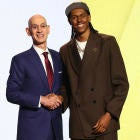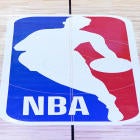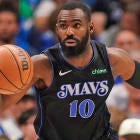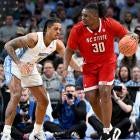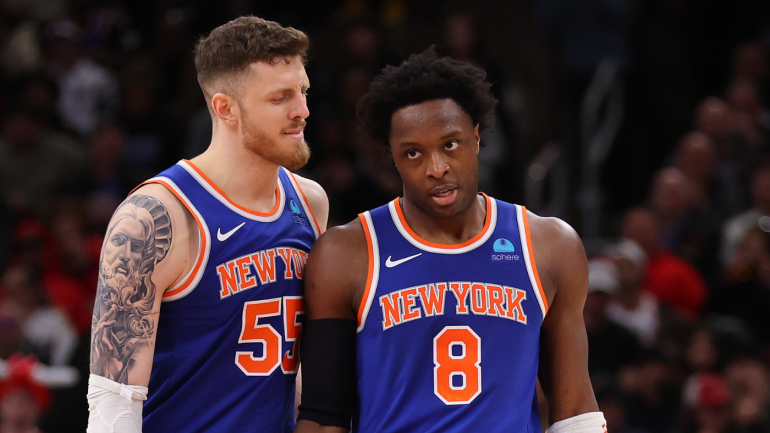
The New York Knicks swung a massive trade for Mikal Bridges late Tuesday night, according to ESPN's Adrian Wojnarowski among multiple reports. Among the immediate reactions: What does this mean for New York's chances of re-signing OG Anunoby, whom it gave up a similarly large haul to bring in last season.
In the Bridges deal, the Knicks acquire the starting two-way wing while sending Brooklyn Nets a total of five future first-round picks (New York's unprotected selections in 2025, 2027, 2029 and 2031 plus Milwaukee's 2025 pick, protected for picks 1-4), as well as an unprotected 2028 pick swap and Bojan Bogdanović.
If you need to take a breath after reading that, you're not alone. It is a massive trade package for a guy who has never even been an All-Star, but in the context of this Knicks team and what Bridges adds in the way of elite perimeter defense, shooting and secondary creation, it makes sense under one condition ...
The Knicks successfully bringing Anunoby back.
Good news on that front as New York remains "determined" to re-sign Anunoby, who is an unrestricted free agent, per Wojnarowski among multiple reports.
The good news on Anunoby might be bad news on Isaiah Hartenstein, however, as there is a substantial market for the big man and the Knicks will likely need to sacrifice somewhere to make their roster work financially.
Of course, none of this is set in stone yet, and with the potential for additional moves to come, small details can make a big difference when it comes to roster construction.
The Knicks are undoubtedly well into the salary cap number crunching, but as of now, the gist is this: Because the Knicks brought back more salary in the current iteration of this Bridges trade than they sent out (Bridges makes more than Bojan Bogdanovic), they are, at the moment, hard capped at the first apron ($178.7 million), which means their full payroll cannot exceed that number. It's a tight fit, as the Knicks currently have $140M on the books.
Do the math, and that leaves them only $38M and change to fill out their roster and it's likely that Anunoby commands nearly all of that, and they would still need to pay four more players to fill out the roster. That's why the operating phrasing above is "current iteration" of this Bridges trade, because it's likely not written in ink yet.
A third or even fourth team could become involved here. Julius Randle could be moved, just as an example. Salaries, in some capacity, will likely be added to New York's outgoing ledger so that they're ultimately not taking a surplus in money back, which, in turn, would hard cap them at the second-apron line of $189M rather than the first. That would give the Knicks roughly $11M in additional spending power to outfit the back end of their roster after re-signing Anunoby.
Bobby Marks breaks it all down here.
All these CBA gymnastics might, or even likely will, end up costing them Isaiah Hartenstein, but Anunoby is the key and New York knows it. If the Knicks somehow lose him, they just traded five first-round picks plus RJ Barrett and Immanuel Quickley (to Toronto for Anunoby) all for Bridges, who would only serve as a replacement for Anunoby. Such a move would not push the Knicks any closer to contention than they already stood.
Losing Anunoby under any circumstances, after trading two core young players for, would be a gut shot. Losing him after this deal for Bridges would be an outright disaster.
Leon Rose and his staff are obviously doing everything they can to make sure that doesn't happen, and given Anunoby is represented by Rose's old agency (CAA), there is a high level of confidence he will remain with New York. Still, until it's official, there are surely some nervous fans waiting to see whether his potential departure will dampen the excitement around this Bridges trade.










